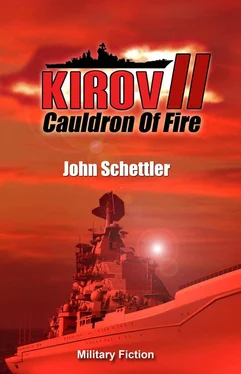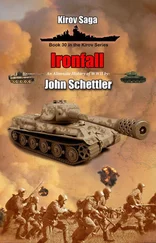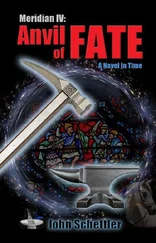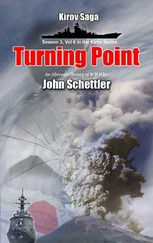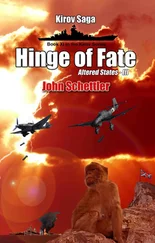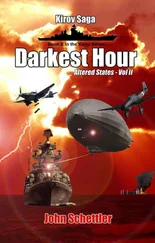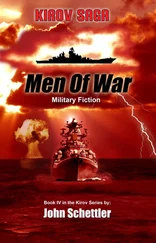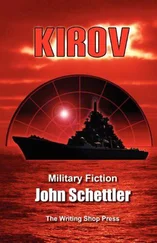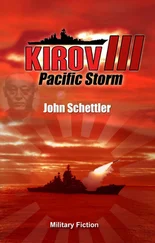“Our present course will lead us into the Tyrrhenian Sea again,” said Fedorov. “That area was not much involved in the action, as both sides were focusing their efforts more on the triangle formed by the Cape of Tunisia, Sardinia and Palermo on Sicily. That said, the Italians had several cruiser divisions planning to rendezvous off Palermo for a possible run at the convoy when it attempts to transit the Sicilian Narrows. Our radars are clearing up, and we may soon have a fix on their positions. But we have been spotted, and I have little doubt that whoever fired on us will be looking to confirm the sighting, and may have planes in the air at this very moment searching for us. If British, they will most likely assume we are one of these Italian cruisers, but they also arranged regular reconnaissance runs over Italian ports in the vicinity, and in time they will make an accounting of all ships in the Italian inventory. Then the real game begins for them, and they will wonder who and what we are, just as before.”
“And if it was an Italian or German plane that attacked us?” Volsky asked.
“Then they will have to assume we are part of the Allied operation, perhaps a fast cruiser intending to mount a raid on coastal facilities. That would be rather risky, but it is possible. The danger for us now is therefore acute. On 11 August, there were upwards of 780 Axis aircraft in the region, 328 Italian and 456 German if the history echoes true. The Allies had 140 aircraft on Malta spread over nine fighter squadrons, three torpedo squadrons, four bomber squadrons, and two more for dedicated reconnaissance. They were just reinforced by 37 more Spitfires flown off HMS Furious at about the same time the Eagle was torpedoed.”
“Furious?” Karpov finally said something, somewhat surprised to hear the name of an aircraft carrier he had made a point of attacking just days ago—a year ago now, as astounding as the prospect seemed.
“Apparently the ship survived,” said Fedorov. “Probably towed to Iceland and then back to Scapa or the Clyde. In any case, they’ve repaired her and put her back in service if she’s here—though we have no real confirmation of that yet. She is mainly used for these ferry operations, just as CV Wasp was first used to send those fighters to Iceland…”
The men shifted uncomfortably. It was as close as Fedorov wanted to come to any recrimination for Karpov here, but it needed to be said. Karpov stewed, but said nothing, though his posture was more closed now, arms folded, and just a touch of anger in his eyes.
“The British managed to keep fighter strength on Malta high, and will bring even more to the fight on their carriers. Needless to say, we do not have that many air defense missiles aboard.” His point was obvious, and Rodenko spoke up on that note about the damage to the Klinok system tracking radars.
“We can replace one system within twenty-four hours,” he advised, “and probably rebuild the second from spare components, but that will take much more time. The long range S-300 system is viable, and there was no damage to our close in defense systems, but the First Officer makes a good point—780 or more Axis aircraft, 140 or more on Malta and then their carriers. How many there, Fedorov?”
“Forty-six on Indomitable , including four recovered from Eagle , another thirty-eight on Victorious —yes, we fought that ship as well in our first encounter, Captain Karpov. The old carrier Argus was present, but no real threat with a flight of just six Sea Harriers, and there would be four more Albacores on Furious after her Spitfire deliveries, though she is heading west for Gibraltar and out of the immediate combat zone. So let us call it about ninety carrier borne aircraft escorting the convoy at this point.”
Rodenko nodded his head, raising an eyebrow. “That makes over a thousand aircraft in the region. Well, we have ninety-six Klinok medium range SAMs still available in inventory, and forty-seven of the longer range S-300s.” If my arithmetic is correct, then we have about one missile for every seven planes out there in theater.”
“Not a very good equation,” said Admiral Volsky. “The attack just hours ago showed us how vulnerable we are should even one enemy plane get through our defense umbrella.”
“At the moment we are perhaps in more danger from Axis aircraft than from the British,” said Fedorov. “Kesselring has ordered numerous squadrons of II Air Corps in Italy, and also units that were based at Sicily, to airfields on Sardinia for the first phase of the gauntlet they are setting up for the British. So the center of gravity is moving west at the moment. There may be flights up this minute and we could be called to battle stations again at any moment. The only good thing about our position here is that we would probably be presumed to be Italian—by both sides. We must decide what course to set, and that quickly, before we are spotted again and that presumption changes.”
“What about submarines,” said Karpov, and with an audible tinge of foreboding in his voice.
Fedorov was quick with an answer. “The initial Axis picket line is much farther west, but they had seventeen Italian subs and two German U-Boats available for the operation. Here, I have the reference from my paper… Seven Italian and two German U-boats deployed north of Algeria. Ten more Italian submarines between Fratelli Rocks just west of Bizerte and the northern entrance to the Skerki Bank closer to Sardinia. This is their second picket line, and some of these submarines will move northwest off Cape Bon to operate in cooperation with aircraft. In addition, an Italian submarine should be deployed just west of Malta, another off Navarino, and three boats about a hundred miles west-southwest of Crete.” He put the document aside but pointed out these areas on the wall map. “As for the British, they’ll have a couple subs watching the Strait of Messina, and then four more well west of Malta. Again, there shouldn’t be anything near us now.”
Tasarov confirmed that they had located no signals that might be hostile submarines thus far, and this seemed to ease the tension in Karpov’s shoulders a bit. He shifted, leaning on his right arm where the elbow rested on the side of the desk.
“We would have to cross both those Axis submarine picket lines if we move west now by the most direct route,” said Fedorov.
“Out of the question,” Volsky replied quickly. “And I think we can thank our stars that we emerged where we did. A few more hours and we would have been right in the thick of things. Yet the question still remains: what course should we take in the long run, and where should we be in twenty-four to forty-eight hours at the height of the battle? Opinions gentlemen?”
Rodenko ventured to speak first “What about the Strait of Messina?”
“That will not be easy sailing for us, I can assure you,” said Fedorov. “There’s an Italian cruiser base there and two more British subs are lurking nearby as well.”
“I can take out those British subs easily enough,” said Tasarov.
“And we have sufficient missile inventory to deal with air strikes at the moment, and plenty of Moskit-IIs left for those cruisers if they bother us.” Rodenko reinforced his idea, waiting.
“There will also be shore batteries, and the channel is very narrow. But suppose we do bull our way through as we surely can,” said Fedorov. “Then where do we go? As you have said, the British will not welcome us at Suez. I suppose we could run through the Aegean and try to run the Dardanelles. After another transit of narrow and dangerous waters, we would then be master’s of the Black Sea.”
“We could smash Axis forces there and assist our comrades!” Tasarov smiled.
Читать дальше
